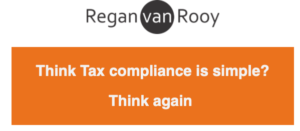Analyzing Value Chains in Business Models Impacted by the Digital Economy
Digitization has given rise to new firms and industries, besides altering the traditional business models and reshaping the global economy. That is a reasonable reason why companies have to evolve the way they conduct a Value Chain Analysis (VCA), in order to be streamlined for digital businesses. The classical qualitative methods to conduct a value chain analysis, such as Porter’s type of analyses, are redundant for the digital businesses as they do not have standard business processes such as manufacturing and research and development. For example, the e-commerce companies such as Alibaba, Amazon, Airbnb and Spotify have completely different value creating factors from those of the traditional players operating in these industries.
Characteristics of business models impacted by the digital economy
In a survey conducted among 744 finance executives in 34 countries, 76{780f53c297e2c008074d23b865a0ce0b35a4f08852d8e1e49466a5a902c4e44e} of the respondents answered that customer satisfaction is one of the top five elements that determine the value in a business. The quality of business processes was mentioned by 64{780f53c297e2c008074d23b865a0ce0b35a4f08852d8e1e49466a5a902c4e44e} of the respondents, coming in second place. In this customer-centric mentality, the investment in big data and artificial intelligence (AI) allows companies to get inside the user’s mind. After the data is captured, it can be used to personalize content and grab the attention of the customer. User’s engagement is translated into revenue, taking Facebook for example: its advertising revenue is mainly dependent on the amount of time users spend on its platform. Google’s advertising revenue is dependent on the number of times or the type of information that is searched by the customers on its platform.
Reputation was also an answer considered a value driver for business. To stay relevant in a time where everything happens real-time and online is not easy, it requires perfect targeting of your audience. A company looking to create value in the digital economy has to identify and establish the brand relevance, having in mind the millennial consumer. A perfect example of long-lasting reputation is Google, do you search for something, or do you “Google” it?
Additionally, user participation, network effects and the provision of user-generated content are commonly observed in the digitalized business models. For example, user’s preferences in music or films already dictate the content of platforms, creating an “on-demand” service.
A shift in the location of value creation
The reliance on platforms that allow end-users to exchange and transact in real-time do not fit in the traditional rationale of a value chain where inputs are converted to outputs in a sequential manner. Therefore, Porter’s value chain may be not suitable for highly digitalized business.
A business model that could serve as an example is Uber. It is critical to identify where value is created through the action of linking two passengers to share the same transport. In this case, platforms are made using data volunteered by the users (i.e., mobile phone or social network usernames). A ride-for-hire company will store a vast amount of data, such as ride history, including the origination and destination that will serve as an input into the company’s surge pricing algorithm besides. This will allow quality control, customer satisfaction and improvement of the network through drivers and passengers reviews aggregated into a rating.
In the retail industry, platforms that connect customers can collect and interpret data in real-time, delivering personalized pricing, promotions and recommendations. Based on the collected data retailers can then optimize their services. The example below shows how the business model has changed.

Digital economy and tax
A few years ago, big data and artificial intelligence were not common terms in the tax and accounting world. Nevertheless, tax authorities are stepping up their game, as discussed previously in our previous article ‘Tax Administrations Raise the Playing Field with Technological Solutions’ and they are collecting their revenues faster and more efficiently. Moreover, VCA was already incorporated in Actions 8-10 of the BEPS Project as a helpful tool to determine relevant factors of value creation and split the profit inside a group. Therefore, tax authorities can potentially use VCA as a tool for risk assessment and identification of allocated profits inside the group. For MNEs, investigating the functions, risks and assets in the group and evaluating of how they integrate with the group’s key value drivers can be a challenging process. However, digitalization and automation could provide a smooth and harmonic result. Extracting, converting and analyzing raw data should not be a manual job, especially for companies that use business models impacted by the digital economy and already have this data electronically.











